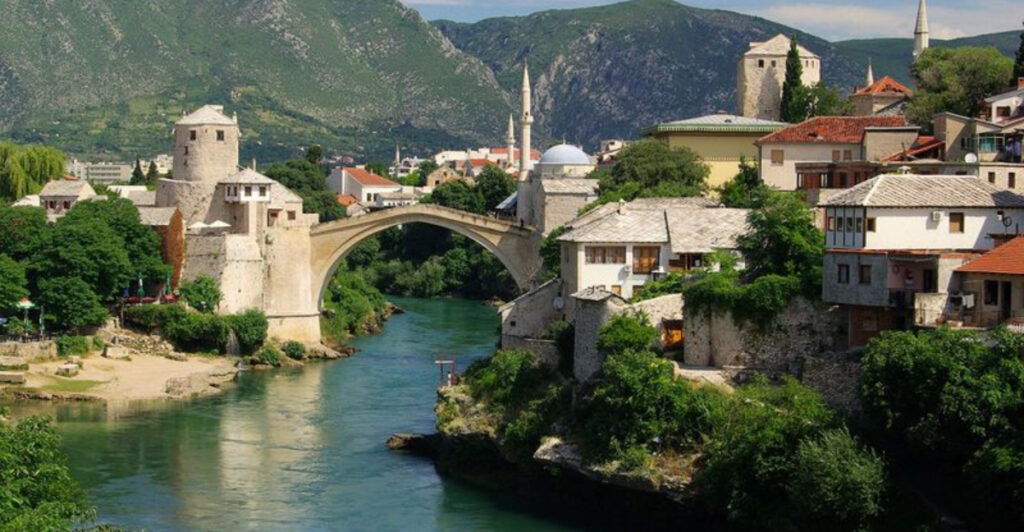When we travel to UNESCO World Heritage towns, we step back in time. These special places preserve architecture, culture, and stories from centuries past. They offer a chance to walk the same streets as medieval merchants, Renaissance artists, and ancient rulers – making them perfect destinations for anyone who loves history.
1. Bruges, Belgium: Medieval Gem of Canals

The moment you step onto Bruges’ cobblestone streets, you’re transported to the 14th century. Gothic spires punctuate the skyline while swan-filled canals reflect centuries-old buildings in their waters. This Flemish masterpiece once thrived as a wealthy trading port, evidenced by its grand Markt square and opulent merchant houses.
Climb the 366 steps of the Belfry Tower for panoramic views that haven’t changed much since medieval times. The Groeningemuseum houses remarkable Flemish primitive paintings, while the Basilica of the Holy Blood claims to hold a vial of Christ’s blood brought back during the Crusades.
Nighttime brings magic when illuminations transform the already-charming canals into something from a fairytale. The town’s exceptional preservation makes it easy to imagine life during its golden age.
2. Dubrovnik, Croatia: Pearl of the Adriatic
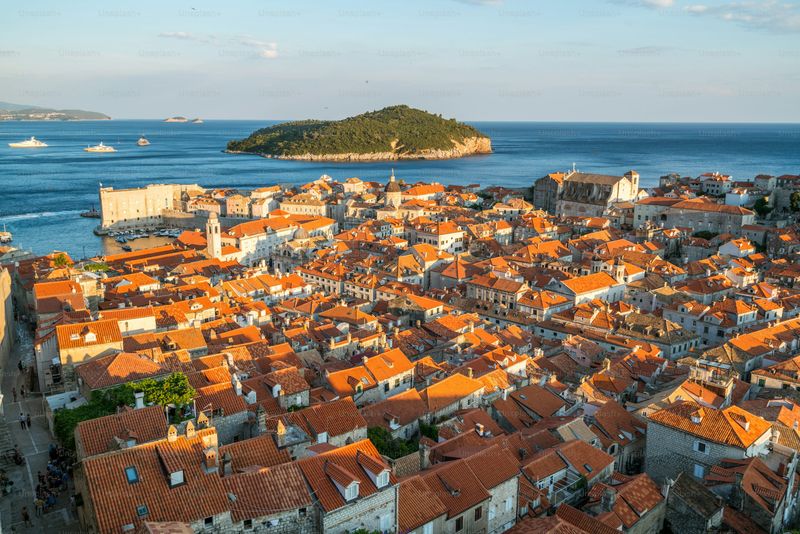
Encircled by massive limestone walls that rise dramatically from the azure Adriatic, Dubrovnik stands as a testament to medieval engineering and artistic vision. The Old Town’s gleaming marble streets are worn smooth by centuries of footsteps, while Renaissance fountains and Baroque churches create an architectural symphony.
Walking the complete circuit of the city walls offers breathtaking views of terracotta rooftops against the deep blue sea. Rector’s Palace showcases the refined governance system of the former Republic of Ragusa, which maintained independence for five centuries through diplomatic skill.
Despite suffering heavy damage during the 1990s Balkan conflict, meticulous restoration has returned the city to its former glory. As the sun sets, the limestone glows golden, revealing why Lord Byron dubbed Dubrovnik “the pearl of the Adriatic.”
3. Colonia del Sacramento, Uruguay: Colonial Riverside Charm
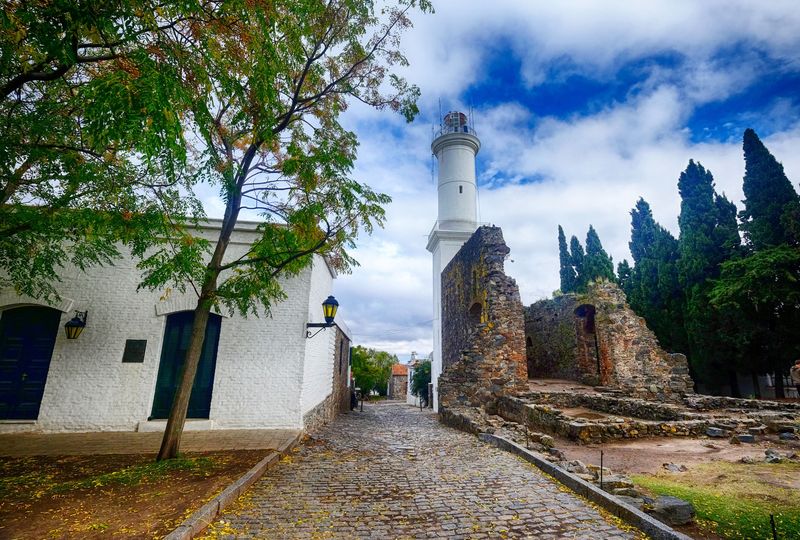
Founded in 1680 as a Portuguese outpost, Colonia del Sacramento sits quietly on the Río de la Plata, just a ferry ride from Buenos Aires. The town’s Barrio Histórico feels frozen in time with its uneven cobblestone streets – many still bearing the original Portuguese stones brought as ship ballast.
Vintage cars from the 1950s rest permanently along the streets, serving as quirky photo spots. The lighthouse, built from stones of the ruined convent, offers spectacular views across to Argentina. Bougainvillea cascades over whitewashed walls while the sound of the river laps gently at the shore.
The town’s strategic position made it a hotly contested prize, changing hands between Spanish and Portuguese forces over a dozen times. Today, this peaceful haven bears architectural influences from both colonial powers, creating a unique cultural blend found nowhere else in South America.
4. Luang Prabang, Laos: Serene Buddhist Haven

Morning mist hangs over the Mekong River as saffron-robed monks process silently through Luang Prabang’s streets during the daily alms-giving ceremony. This spiritual rhythm has continued for centuries in this former royal capital, where time seems to move more slowly.
Golden-spired temples with sweeping rooflines nestle between French colonial mansions – a testament to the town’s layered history. Mount Phousi rises at the peninsula’s center, crowned by a stupa offering panoramic views of the surrounding mountains and the confluence of the Mekong and Nam Khan rivers.
Waterfalls cascade through jungle-clad hills just outside town, while night markets showcase the exquisite craftsmanship of local artisans. Unlike many heritage sites, Luang Prabang remains a living community where ancient traditions blend seamlessly with daily life, creating an atmosphere of authentic tranquility rarely found in our modern world.
5. Český Krumlov, Czech Republic: Fairytale Castle Town
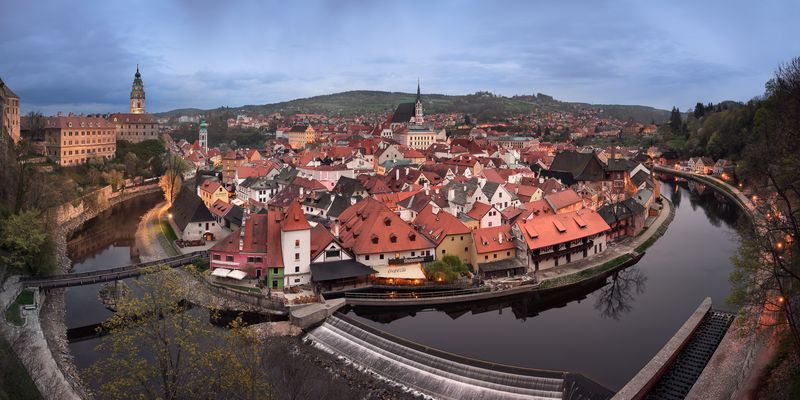
Český Krumlov unfolds like an illustration from a medieval storybook, with its imposing castle perched dramatically above the Vltava River’s horseshoe bend. The second-largest castle complex in the Czech Republic dominates the skyline with its distinctive round tower painted in Renaissance sgraffito patterns.
Narrow, winding lanes reveal hidden courtyards and artisan workshops where traditional crafts continue. The original Baroque theater inside the castle still uses 18th-century stage machinery and hand-painted scenery for special performances. Red-tiled roofs cluster together while the river winds lazily through town, crossed by stone bridges.
Miraculously spared from bombing during World War II and relatively untouched by Soviet-era development, the town preserves its 16th-century character with remarkable authenticity. Climbing the castle tower rewards visitors with a view that seems to transcend time – the medieval layout spreading below exactly as it appeared centuries ago.
6. Hoi An, Vietnam: Lantern-Lit Trading Port
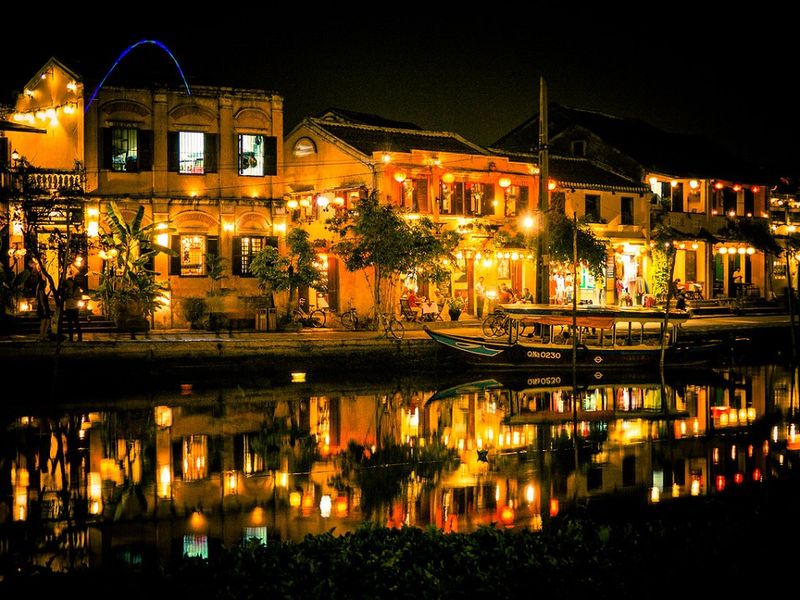
As night falls over Hoi An, hundreds of silk lanterns illuminate the ancient streets in a rainbow of colors. This former trading port reached its zenith between the 15th and 19th centuries when merchants from China, Japan, and Europe established their presence along the Thu Bon River.
Their architectural legacy remains in the remarkably preserved wooden buildings that line the pedestrian-only streets. Chinese assembly halls with ornate roofs stand near Japanese-style homes with their distinctive covered bridge. French colonial influences appear in shuttered windows and yellow-washed walls that glow golden in the afternoon light.
The town’s famous tailors continue a centuries-old tradition, creating made-to-measure garments within 24 hours. Monthly full moon festivals see all electric lights extinguished, leaving only the glow of traditional lanterns to illuminate the Old Town – a magical glimpse into what evenings looked like centuries ago.
7. San Gimignano, Italy: Tower Houses of Tuscany
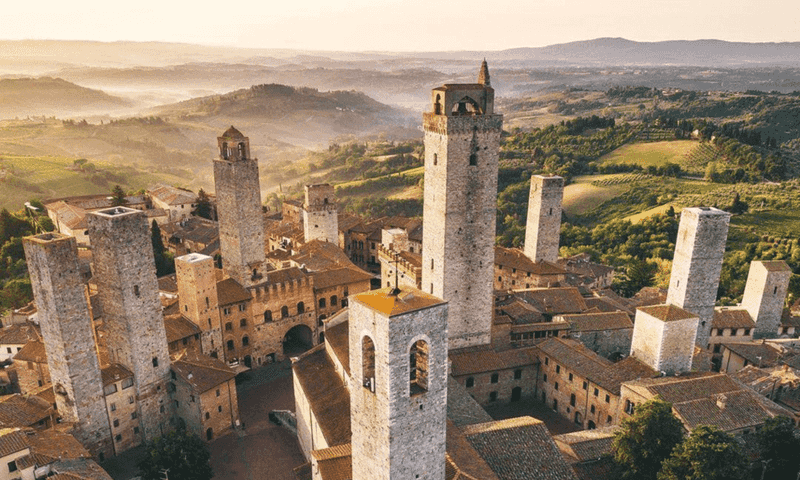
Rising dramatically from the rolling hills of Tuscany, San Gimignano’s stone towers create one of Italy’s most distinctive silhouettes. Once numbering 72, these medieval skyscrapers were built by rival noble families competing to display their wealth and power – the taller the tower, the greater the prestige.
Today, 14 towers remain, giving the town its nickname as the “Medieval Manhattan.” Walking the narrow stone streets reveals unexpected treasures: the Collegiate Church with its extraordinary frescoes depicting heaven and hell, and Piazza della Cisterna with its octagonal well at the center of the sloping triangular square.
The surrounding countryside produces the famous Vernaccia wine, one of Italy’s oldest and most prestigious white wines. From the top of Torre Grossa, the town’s tallest remaining tower, visitors can see an archetypal Tuscan landscape that has changed little since the Middle Ages – a patchwork of vineyards, olive groves, and cypress trees stretching to the horizon.
8. Ouro Preto, Brazil: Golden Baroque Splendor
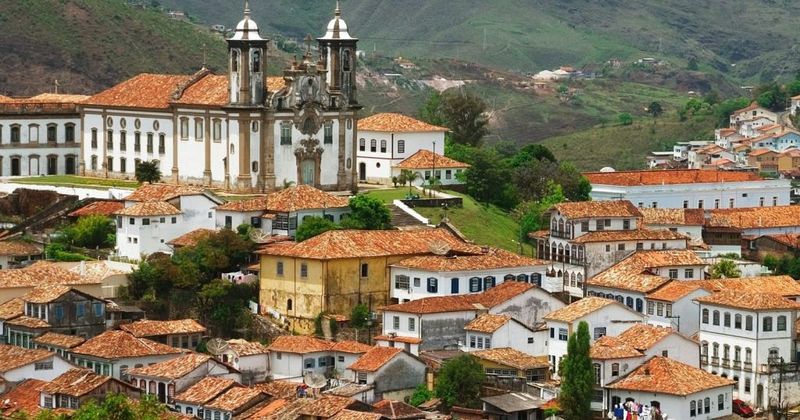
Cascading down steep hillsides in Brazil’s Minas Gerais state, Ouro Preto’s whitewashed buildings and ornate churches tell the story of one of history’s greatest gold rushes. The town’s name – literally “Black Gold” – refers to the dark gold nuggets discovered here in the late 17th century, triggering a mining boom that transformed colonial Brazil.
Master sculptor Aleijadinho, who continued working even after losing his fingers to disease, left his artistic legacy in the town’s magnificent Baroque churches. The Igreja de São Francisco de Assis showcases his genius with intricate soapstone carvings and painted wooden ceilings that rival Europe’s finest religious art.
Steep cobblestone streets connect the town’s squares, offering breathtaking views at every turn. Despite its remote mountain setting, Ouro Preto became a center of revolutionary thinking, sparking Brazil’s first independence movement. The town’s mining wealth created an artistic flowering rarely seen in colonial Latin America.
9. Lamu, Kenya: Swahili Island Sanctuary
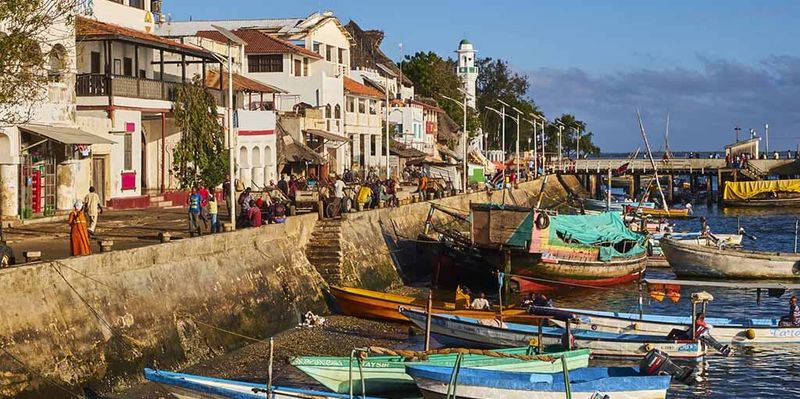
Off Kenya’s northern coast lies Lamu, an island where donkeys remain the primary mode of transportation and centuries of Swahili tradition thrive undisturbed. Founded in the 14th century, this port town became a cultural melting pot where African, Arab, Persian, Indian, and European influences merged into a distinct Swahili identity.
Narrow, winding alleys barely wide enough for two people to pass lead between whitewashed coral stone buildings. Ornately carved wooden doors – each unique – hint at the wealth and status of former residents. The Lamu Museum, housed in a former sultan’s palace, displays traditional Swahili artifacts alongside exhibits on maritime history.
Dhows with triangular sails still ply the waters around the island, fishing and transporting goods as they have for centuries. The call to prayer echoes from numerous mosques, while the scent of spices wafts from local kitchens. This remarkable cultural continuity earned Lamu its UNESCO designation as the oldest and best-preserved Swahili settlement in East Africa.
10. Tallinn, Estonia: Medieval Baltic Stronghold
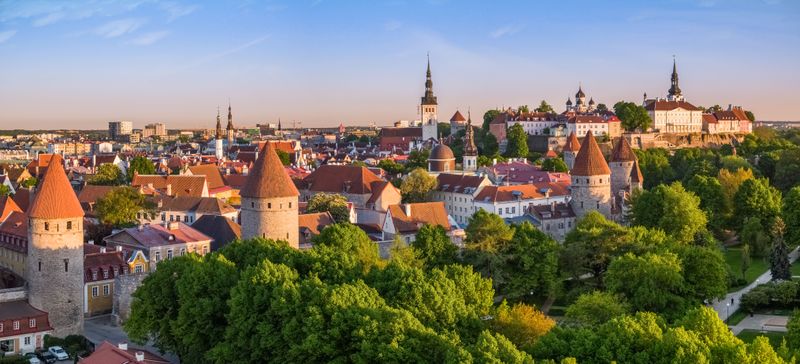
Tallinn’s Old Town presents one of Europe’s most complete medieval urban landscapes, with its skyline of pointy spires and defensive towers looking much as it did 600 years ago. The town’s position as a key Hanseatic League trading post brought enormous wealth, evidenced in the merchant houses and guild halls surrounding the cobblestoned Town Hall Square.
Two distinct parts form the historic center: Toompea Hill, home to the nobility and castle, and the Lower Town where merchants and craftsmen lived. The Alexander Nevsky Cathedral’s distinctive Russian Orthodox onion domes stand in stark contrast to the Gothic spire of St. Olaf’s Church, once the tallest building in the world.
Remarkably, much of Tallinn’s 13th-century city wall remains intact, with 26 defensive towers still standing guard. The view from Kohtuotsa viewing platform reveals a fairy-tale panorama of red-tiled roofs, while hidden courtyards and medieval taverns offer intimate glimpses into the past.
11. Bukhara, Uzbekistan: Silk Road Jewel
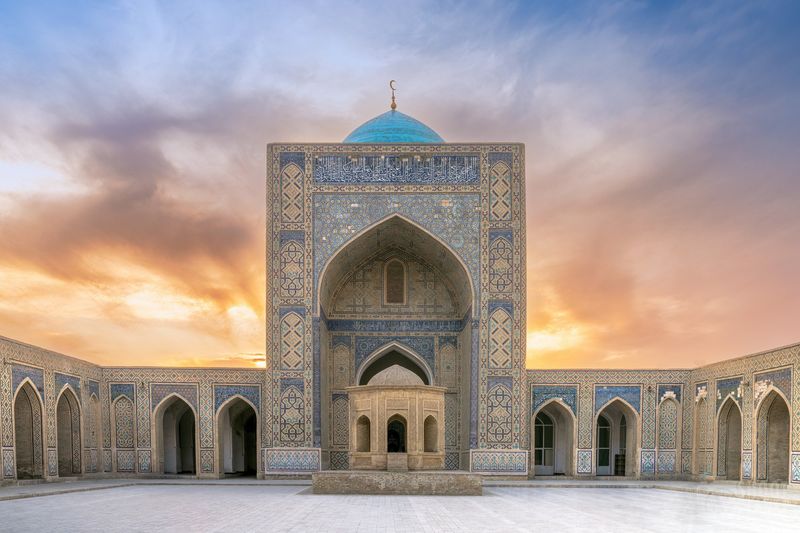
Standing beneath the turquoise dome of Bukhara’s Mir-i-Arab Madrasa, you’re surrounded by 2,500 years of continuous urban history. This desert oasis city served as a crucial Silk Road trading post and intellectual center, where mathematics, astronomy, poetry, and Islamic theology flourished under enlightened rulers.
The Poi-Kalyan complex dominates the skyline with its 12th-century minaret – so tall and impressive that even Genghis Khan spared it during his otherwise destructive conquest. Hundreds of domed bazaars once housed silk merchants, jewelers, and spice traders; many still function as markets today. The Ark fortress, a massive earthen citadel, housed Bukhara’s emirs for centuries.
Chashma-Ayub, or “Job’s Well,” marks where the biblical prophet supposedly struck the ground to create a spring in the desert. The water still flows today. Nearly 140 protected monuments dot the ancient city center, creating one of the most complete examples of a medieval Central Asian city preserved anywhere in the world.
12. Gjirokastër, Albania: Ottoman Stone City
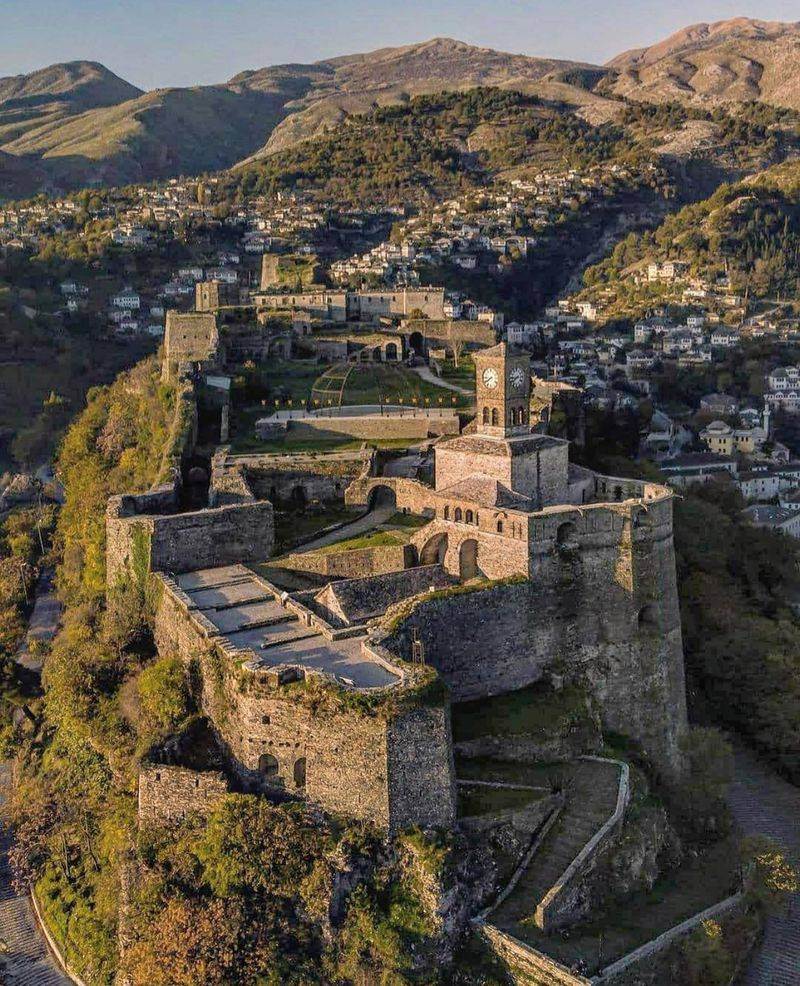
Clinging dramatically to a steep hillside above the Drino Valley, Gjirokastër’s slate-roofed houses seem to cascade down from the massive castle crowning the summit. Known as the “City of Stone,” this Ottoman-era stronghold features a distinctive style of tall houses with stone lower floors, wooden upper stories, and projecting balconies.
The imposing castle – one of the Balkans’ largest – contains a fascinating arms museum with weapons spanning centuries, including captured American and British equipment from the Communist era. Novelist Ismail Kadare’s childhood home has been preserved as a museum, offering insight into traditional family life in these unique tower houses.
Cobblestone streets wind between high stone walls, occasionally opening to reveal spectacular mountain vistas. The Old Bazaar area still functions as the commercial heart of the old town. Despite surviving numerous wars and the isolation of Albania’s Communist period, Gjirokastër maintains its architectural integrity – a remarkable window into Balkan life under Ottoman rule.
13. Lalibela, Ethiopia: Rock-Hewn Churches
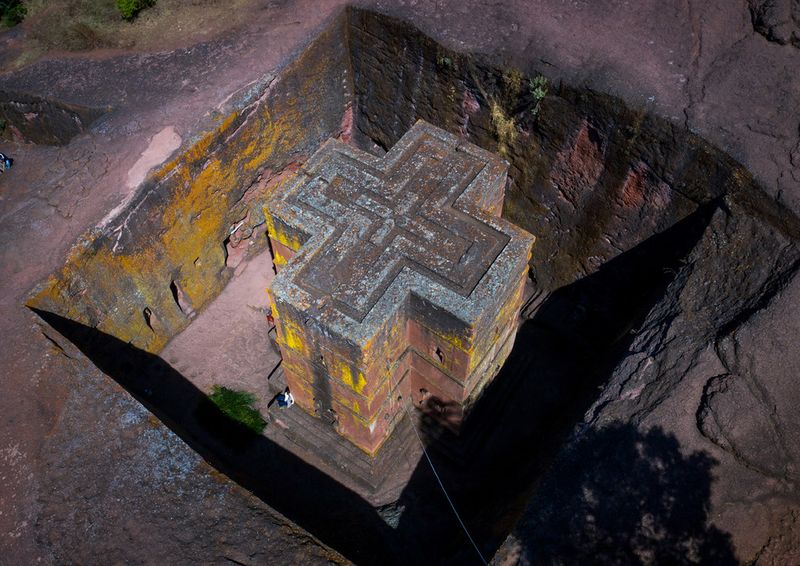
In the rugged highlands of northern Ethiopia stands Lalibela, home to what many consider the eighth wonder of the world – 11 medieval churches carved entirely from solid volcanic rock. Unlike structures built upward, these monolithic churches were created by excavating downward, carving intricate interiors while leaving the buildings connected to the living rock below.
The most spectacular, Bet Giyorgis (Church of St. George), forms a perfect cross when viewed from above. Underground tunnels and trenches connect many churches, symbolizing the journey from darkness to light. Religious ceremonies here have remained unchanged for centuries, with white-robed priests using ancient prayer staffs and sistra during services.
King Lalibela ordered these churches built in the 12th century after a pilgrimage to Jerusalem, aiming to create a “New Jerusalem” safe from Muslim conquests. Local legend claims angels helped with construction. Still functioning as places of worship, these extraordinary sanctuaries host thousands of pilgrims during religious festivals, especially during Ethiopian Christmas.
14. Rhodes, Greece: Knights’ Medieval Stronghold
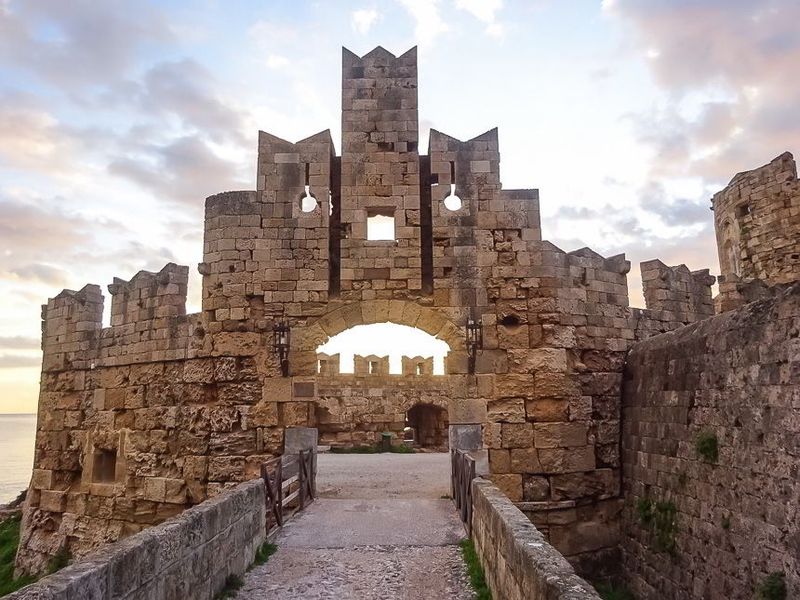
Walking through the imposing gates of Rhodes Old Town feels like stepping directly into the Crusades era. The Order of Knights Hospitaller transformed this ancient Greek island into their Mediterranean headquarters after being forced from Jerusalem in the 14th century, creating the best-preserved medieval walled city in Europe.
The Street of the Knights – a perfectly preserved medieval thoroughfare – leads uphill to the Palace of the Grand Master, an imposing fortress within a fortress. Inside its massive walls, Gothic arches frame courtyards while mosaic floors from ancient Greek temples have been repurposed for Christian knights’ quarters. The Archaeological Museum, housed in the former Knights’ Hospital, displays artifacts spanning thousands of years.
Cannon emplacements still point seaward, ready to defend against Ottoman invaders. The mighty walls, withstanding numerous sieges before finally falling in 1522, enclose a living city where Byzantine churches, Ottoman mosques, and medieval synagogues stand side by side – testimony to Rhodes’ unique position at the crossroads of civilizations.
15. Pingyao, China: Ming Dynasty Banking Center

Surrounded by a complete Ming Dynasty wall with six massive gates and 72 watchtowers, Pingyao stands frozen in time – China’s best-preserved ancient walled city. Founded 2,700 years ago and reaching its peak during the Ming and Qing dynasties, this remote town in Shanxi province became China’s banking center, developing the country’s first check system.
The Rishengchang Exchange Shop, established in 1823, operated as the “Chinese Wall Street” with branches throughout the empire and beyond. Traditional courtyard homes with gray brick walls and red lanterns line streets laid out in a grid pattern resembling the Chinese character for “well.” Ancient temples and government buildings maintain their original features, including the impressive County Government Office with its stern magistrate’s court.
Pingyao’s remoteness saved it from modernization that transformed other Chinese cities. Walking its quiet streets at dawn, when mist rises between ancient rooftops and residents practice tai chi in small squares, offers a genuine glimpse into imperial China that few other places can match.
16. Mostar, Bosnia and Herzegovina: Bridge Between Cultures
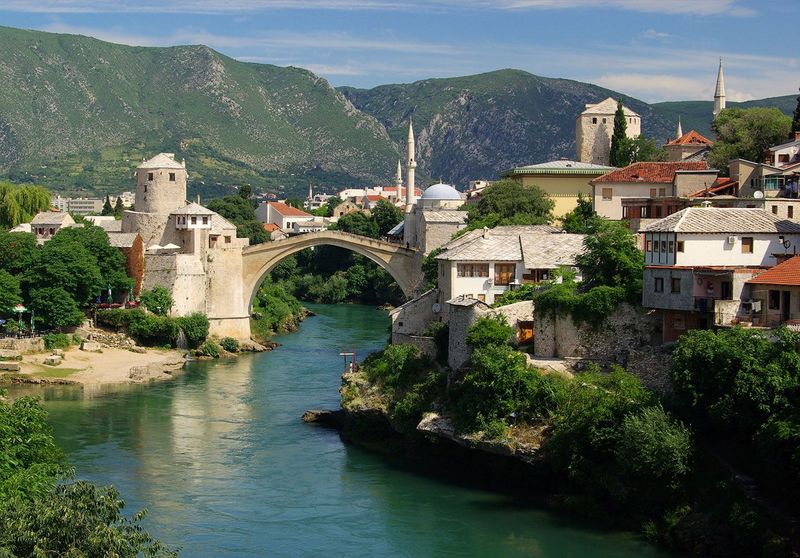
The graceful arch of Stari Most (Old Bridge) soars 24 meters above the emerald waters of the Neretva River, symbolizing both division and connection in this historic Balkan town. Originally built by Ottoman architects in 1566, the bridge stood for 427 years before being deliberately destroyed during the Bosnian War in 1993 – a moment that shocked the world.
Painstakingly reconstructed using original techniques and some recovered stones, the bridge reopened in 2004 as a symbol of reconciliation. Traditional Ottoman-style houses with wooden balconies cluster along narrow cobblestone streets leading to the bridge. The Koski Mehmed Pasha Mosque offers visitors who climb its minaret a spectacular view of the bridge and river valley.
During summer, local divers continue a centuries-old tradition of plunging from the bridge into the cold river below – a rite of passage requiring both courage and skill. Mostar’s name derives from “mostari” (bridge keepers), highlighting how central this crossing has always been to the town’s identity and survival.
17. Guanajuato, Mexico: Silver City of Colorful Splendor
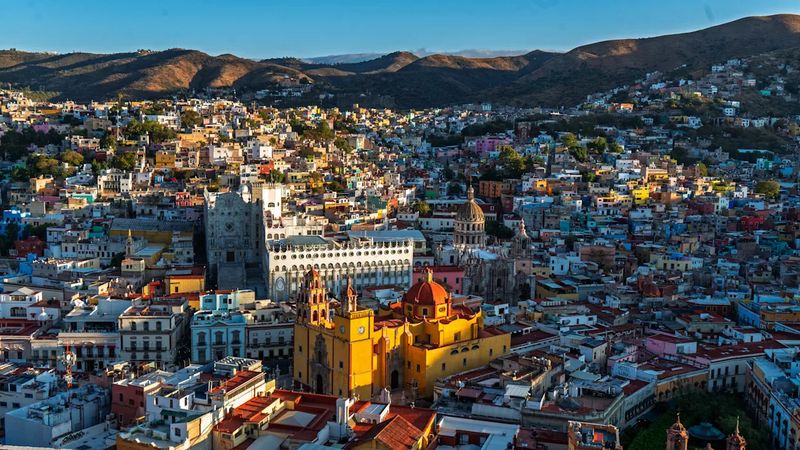
Nestled in a narrow valley in central Mexico, Guanajuato explodes with color – its colonial buildings painted in vibrant hues of pink, blue, yellow, and orange. Founded in 1559 after the discovery of silver, this mining boomtown once produced one-third of the world’s silver and financed much of the Spanish Empire.
Unlike most grid-pattern Spanish colonial cities, Guanajuato’s streets follow the terrain’s natural contours, creating a labyrinth of narrow alleys called callejones. The most famous, Callejón del Beso (Alley of the Kiss), is so narrow that balconies nearly touch across it. Underground tunnels, originally built for flood control using old mining shafts, now serve as roadways beneath the historic center.
The ornate Juárez Theater and La Valenciana Church showcase the extraordinary wealth generated by the mines. Every October, the International Cervantino Festival transforms the city into a global cultural stage. Diego Rivera’s birthplace stands preserved, honoring Mexico’s famous muralist who drew inspiration from his colorful hometown.

